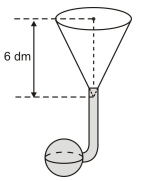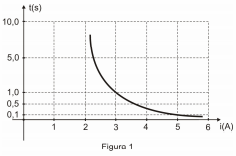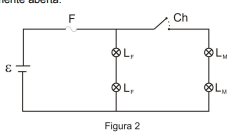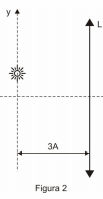TEXT
Music therapy with cancer patients
Cancer is the second leading cause of death in the United States, in Germany and in many other industrialized countries. In 2007, about 12 million people were diagnosed with cancer worldwide with a mortality rate of 7.6 million (American Cancer Society, 2007). In the industrial countries, the most commonly diagnosed cancers in men are prostate cancer, lung cancer and colorectal cancer. Women are most commonly diagnosed with breast cancer, gastric cancer and lung cancer.
The symptoms of cancer depend on the type of the disease, but there are common symptoms caused by cancer and/or by its medical treatment (e.g., chemotherapy and radiation). Common physical symptoms are pain, fatigue, sleep disturbances, loss of appetite, nausea (feeling sick, vomiting), dizziness, limited physical activity, hair loss, a sore mouth/throat and bowel problems. Cancer also often causes psychological problems such as depression, anxiety, mood disturbances, stress, insecurity, grief and decreased self-esteem. This, in turn, can implicate social consequences. Social isolation can occur due to physical or psychological symptoms (for example, feeling too tired to meet friends, cutting oneself off due to depressive complaints).
Besides conventional pharmacological treatments of cancer, there are treatments to meet psychological and physical needs of the patient. Psychological consequences of cancer, such as depression, anxiety or loss of control, can be counteracted by psychotherapy. For example, within cognitive therapy cancer patients may develop coping strategies to handle the disease. Research indicates that music therapy, which is a form of psychotherapy, can have positive effects on both physiological and psychological symptoms of cancer patients as well as in acute or palliative situations.
There are several definitions of music therapy. According to the World Federation of Music Therapy (WFMT, 1996), music therapy is: “the use of music and/or its music elements (sound, rhythm, melody and harmony) by a qualified music therapist, with a client or group, in a process designed to facilitate and promote communication, relationship, learning, mobilization, expression, organization, and other relevant therapeutic objectives, in order to meet physical, emotional, mental, social and cognitive needs”.
The Dutch Music Therapy Association (NVCT, 1999) defines music therapy as “a methodological form of assistance in which musical means are used within a therapeutic relation to manage changes, developments, stabilisation or acceptance on the emotional, behavioural, cognitive, social or on the physical field”.
The assumption is that the patient's musical behaviour conforms to their general behaviour. The starting points are the features of the patient's specific disorder or disease pattern. There is an analogy between psychological problems and musical behaviour, which means that emotions can be expressed musically. For patients who have difficulties in expressing emotions, music therapy can be a useful medium. Music therapy might be a useful intervention for breast cancer patients in order to facilitate and enhance their emotional expressivity. Besides analogy, there are further qualities of music that can be beneficial within therapeutic treatment. One of these qualities is symbolism: music can symbolize persons, objects, incidents, experiences or memories of daily life. Therefore, music is a reality, which represents another reality. The symbolism of the musical reality enables the patient to deal safely with the other reality for it evokes memories about persons, objects or incidents. These associations can be perceived as positive or negative, so they release emotions in the patient.
Music therapy both addresses physical and psychological needs of the patient. Numerous studies indicate that music therapy can be beneficial to both acute cancer patients and palliative cancer patients in the final stage of disease.
Most research with acute cancer patients receiving chemotherapy, surgery or stem cell transplantation examined the effectiveness of receptive music therapy. Listening to music during chemotherapy, either played live by the music therapist or from tape has a positive effect on pain perception, relaxation, anxiety and mood. There was also found a decrease in diastolic blood pressure or heart rate and an improvement in fatigue; insomnia and appetite loss could be significantly decreased in patients older than 45 years. Further improvements by receptive music therapy were found for physical comfort, vitality, dizziness and tolerability of the chemotherapy. A study with patients undergoing surgery found that receptive music therapy led to decreased anxiety, stress and relaxation levels before, during and after surgery. Music therapy can also be applied in palliative situations, for example to patients with terminal cancer who live in hospices.
Studies indicate that music therapy may be beneficial for cancer patients in acute and palliative situations, but the benefits of music therapy for convalescing cancer patients remain unclear. Whereas music therapy interventions for acute and palliative patients often focus on physiological and psychosomatic symptoms, such as pain perception and reducing medical side-effects, music therapy with posthospital curative treatment could have its main focus on psychological aspects. A cancer patient is not free from cancer until five years after the tumour ablation. The patient fears that the cancer has not been defeated. In this stage of the disease, patients frequently feel insecure, depressive and are emotionally unstable. How to handle irksome and negative emotions is an important issue for many oncology patients. After the difficult period of the medical treatment, which they often have overcome in a prosaic way by masking emotions, patients often express the wish to become aware of themselves again. They may wish to grapple with negative emotions due to their disease. Other patients wish to experience positive feelings, such as enjoyment and vitality.
The results indicate that music therapy can also have positive influences on well-being of cancer patients in the post-hospital curative stage as well as they offer valuable information about patients' needs in this state of treatment and how effects can be dealt with properly.
(Adapted from https://essay.utwente.nl/59115/1/scriptie_F_Teiwes.pdf - Access on 25/02/19)
Read the statement based on paragraph 8 and mark the action that happened first. A study discovered that receptive music therapy had decreased anxiety and stress levels before, during and after surgeries. Also, music therapy can be applied to different levels of the disease.




